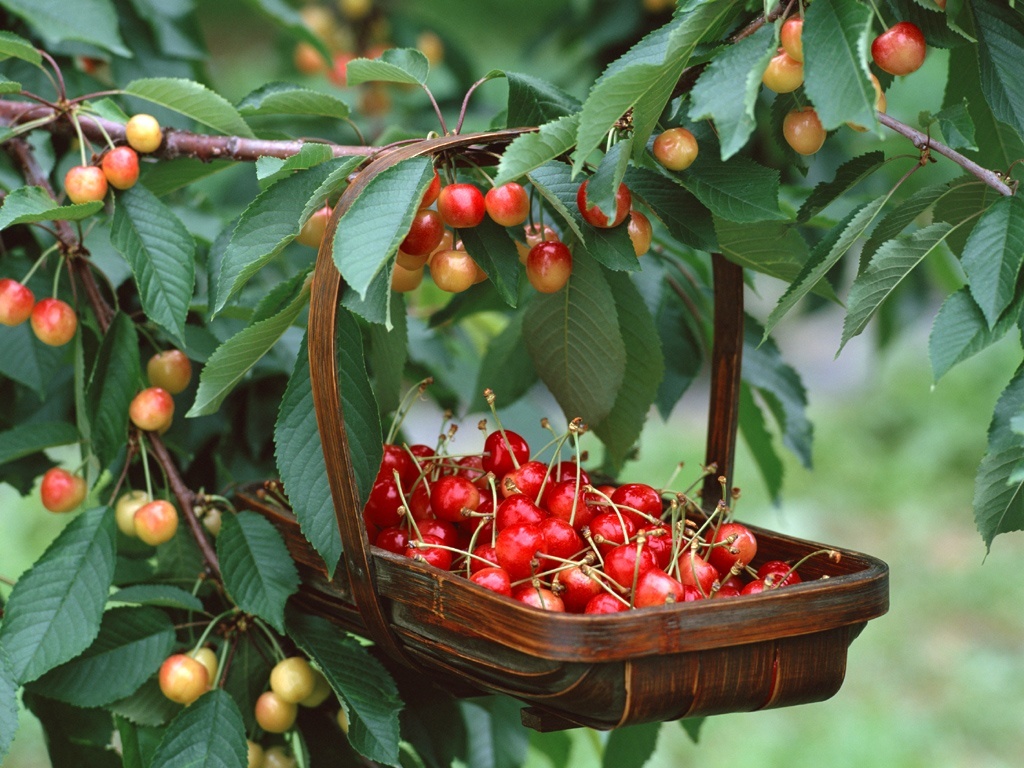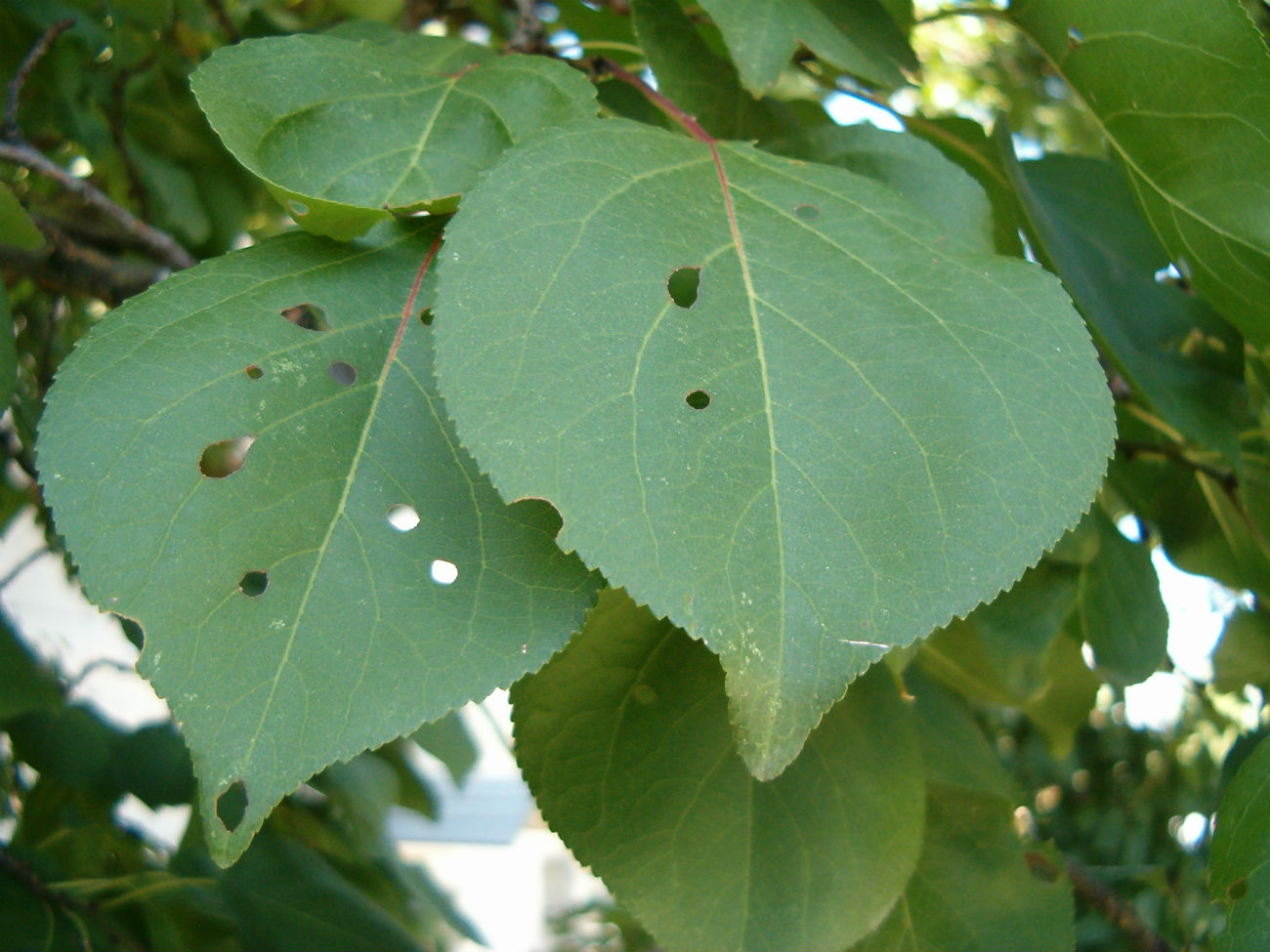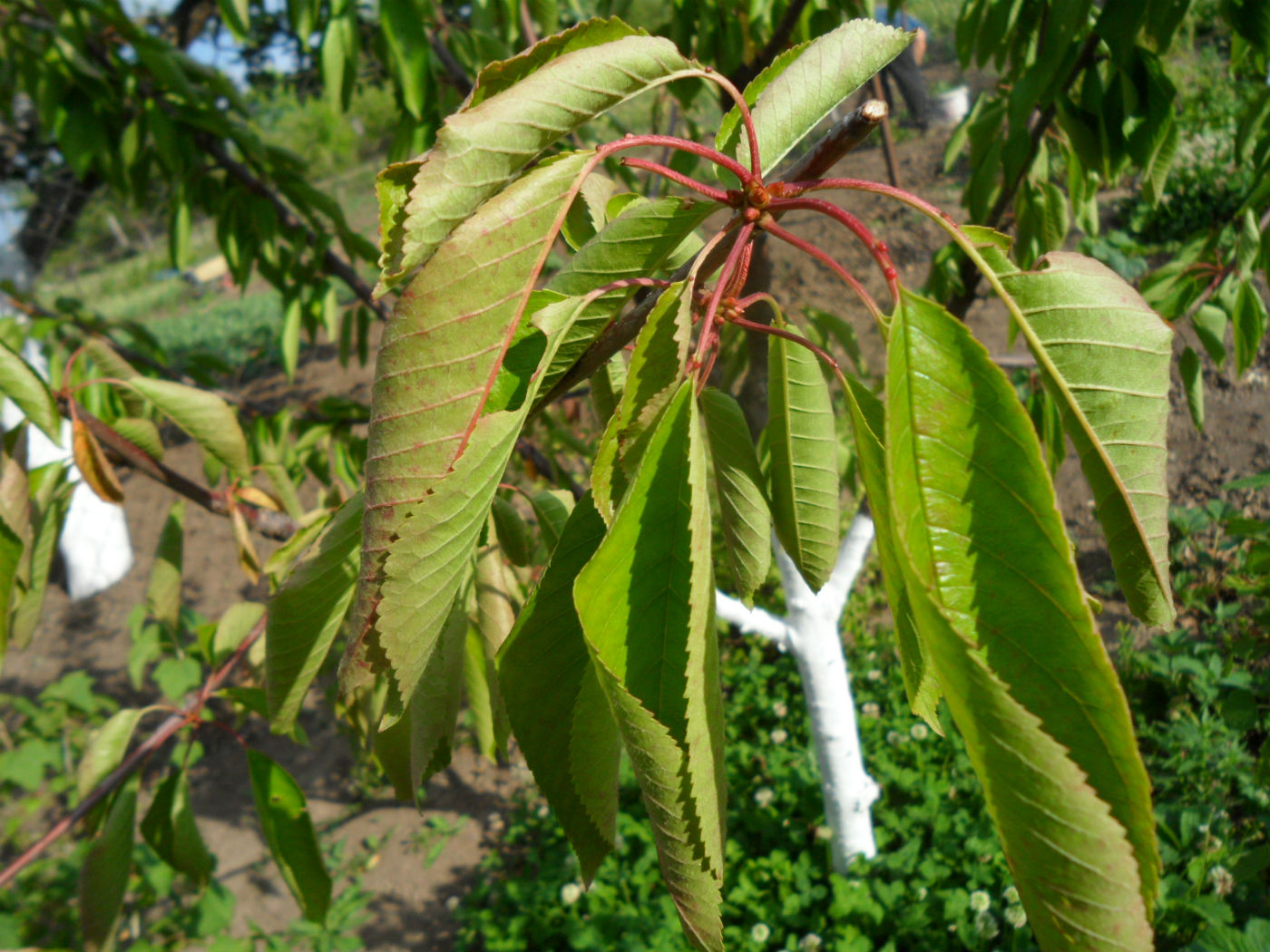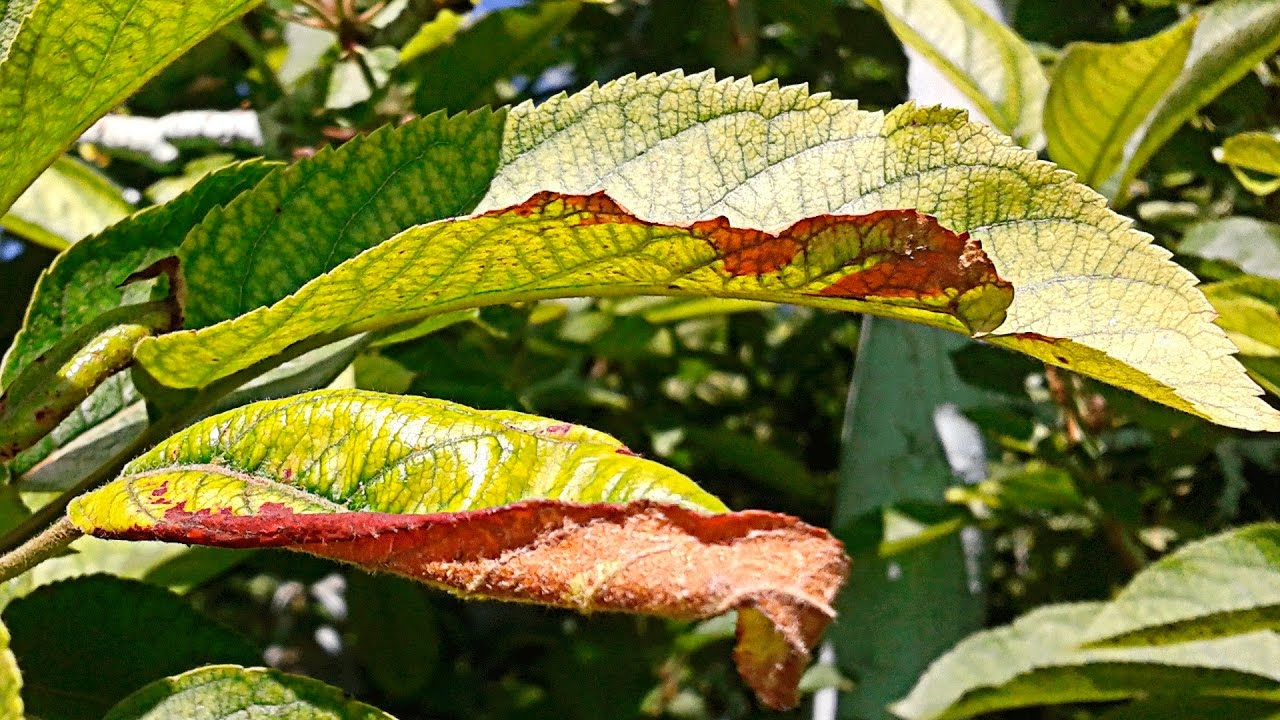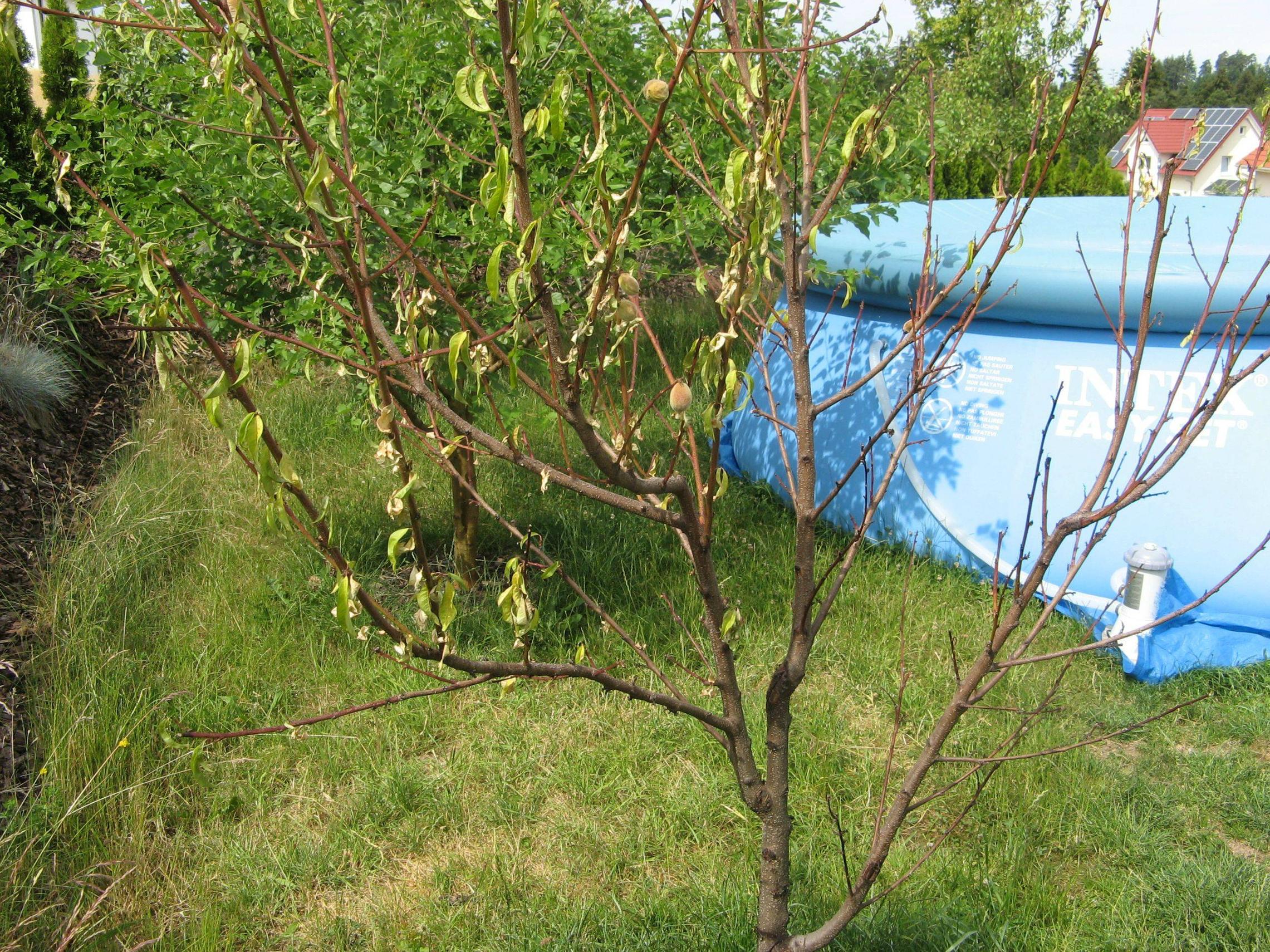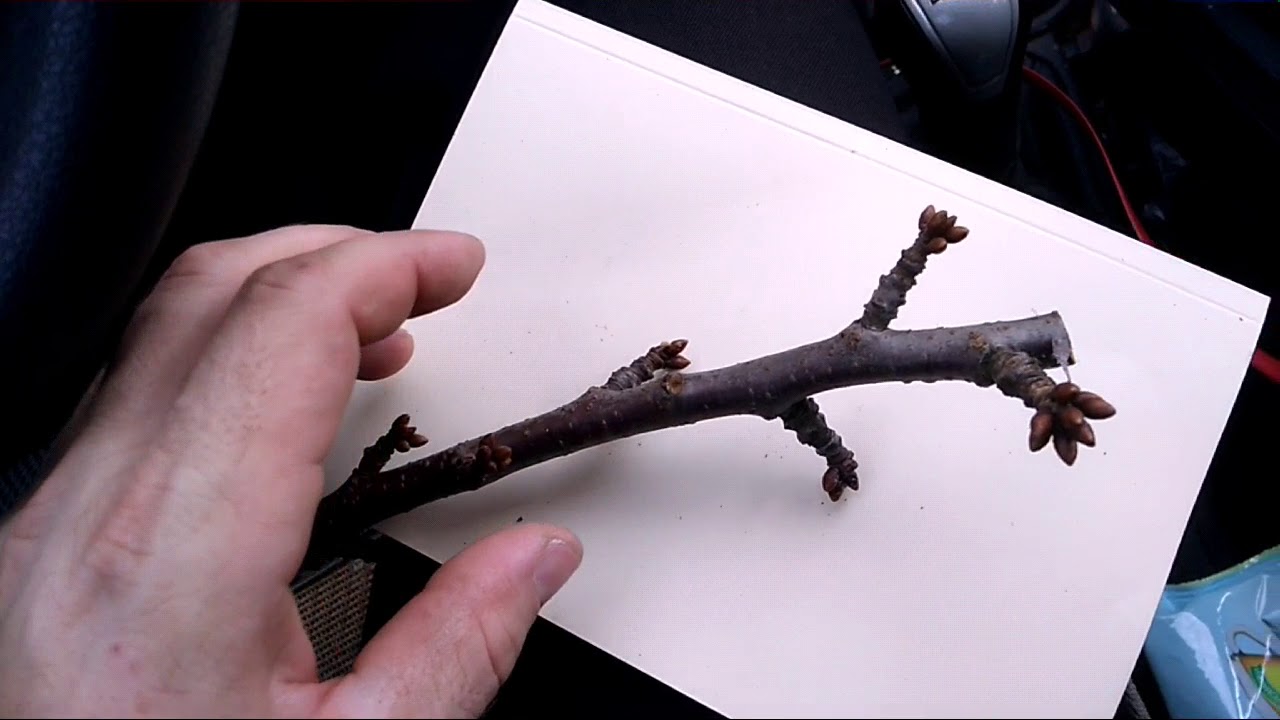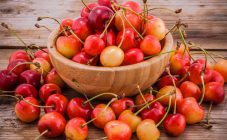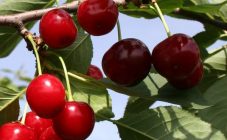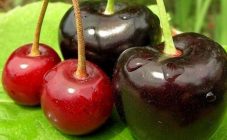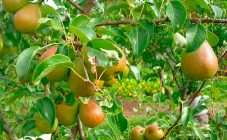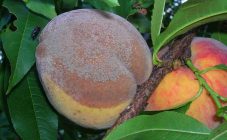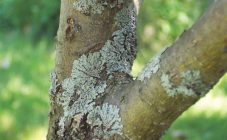Content:
One of the characteristics of a healthy sweet cherry is its rich green foliage. Any damage to the bark, branches, leaves opens access for harmful microorganisms and infection, the cherry begins to hurt. Very often, under the influence of diseases or physiological disorders, trees cease to bear fruit, dry up and die.
Causes of diseases of sweet cherry
A tree disease can cause a lot of reasons to which experts attribute:
- Mechanical damage - caused by atmospheric phenomena (snowfall, icing), damage to the bark by rodents, leaves and berries - by insect pests, scuffs on branches in the wind, holes in the leaves broken by hail;
- Thermal damage caused by sharp temperature fluctuations leading to cracking of the bark and freezing of wood. This happens when, during sunny frosty days, the bark of the tree warms up, and when the temperature drops sharply at night, it freezes;
- Excessive soil moisture, in which oxygen is displaced from the soil, the root system is inhibited, which makes cherries unstable to scab, coccomycosis and other fungal diseases;
- Infection with parasites (phytopathogenic fungi, bacteria, viruses);
- Damage by pests (aphids, mites, fruit moths, leafworm);
- A deficiency or excess of mineral fertilizers provokes chlorosis, root rot and fusarium, a delay in plant growth occurs, and the color of the foliage changes.
Signs of disease
Any of the above reasons, if not taken proper measures, can cause diseases of the cherry. And the fight against them must be started, having noticed the first signs of the unhealthy tree. They indicate diseases and cracked bark, and growths on the trunk and branches, and gum leakage. The fruits also suffer: they become wormy, rot and become covered with blackheads. On the leaves of sweet cherry red growths appear in the form of tubercles, brown rusty spots, they become pale or full of holes in the spring or summer.
Cherry diseases
The description of cherry diseases is reduced to four of their groups: fungal, viral, bacterial and non-infectious. The most common type of disease in orchards is fungal diseases. Infection occurs with fungal spores, they are carried by the wind, insects and contaminated tools to injured areas of the tree.
According to experts, the protection of cherries from a fungal attack should begin with the choice of the type of tree and its location in the garden. Moderate watering and fertilization, and regular, correct pruning also create good conditions for trees to be disease resistant.
Hole spot (clasterosporium disease)
Warm rainy weather and periods with high air humidity (more than 70%) contribute to the development of a disease such as clasterosporium. The disease is spread by fungal spores by rain and wind or aphids, the carrier of fungal spores on their bodies. Micellar forms of the fungus overwinter in bark and wood. With sufficient moisture, the spores germinate.
Typical signs of this disease appear on the leaves, although all aerial plant organs are affected by it. Already in early spring, red pimples appear on the legs of the leaves of the cherry, and small specks of brown spots appear on the leaves.In a very short time, they increase, leaf tissues in these places die off and begin to crumble, forming holes with a reddish border. The disease progresses quickly, within two weeks. The presence of a border is a diagnostic sign indicating precisely clasterosporium disease.
If the lesion is strong, then you can observe the appearance of red dots on the bark of young shoots of sweet cherry. The affected area begins to turn red, reaches brown, and the bark begins to burst. From the wounds, a binder similar to resin is released - this is a gum. Cracks scar and grow, growths are formed around them. Gum disease must be fought, since there are disease-causing spores in the liquid. They are spread to healthy trees during wind or rain.
How to heal such trees? Experts recommend carrying out a protective treatment so that the affected leaves do not fall off prematurely, and the tree does not weaken much. If berries ripen during this period, the biological preparation Fitosporin-M is used, Fitovir is added for pests. These drugs are not chemical, the berries can be eaten in 3-4 days.
After picking the berries, you need to treat the cherries with more serious preparations of contact-systemic action - fungicides, for example, Acrobat or Ordan, and add Confidor - a highly effective low-toxic insecticide of the systemic and contact group against a wide range of pests.
As a preventive measure, gardeners recommend during the entire growing season to treat the tree with drugs, for example, Cuproxat, with an interval of 10 days, or Horus (3.5 g per 10 l of water) at the first appearance of signs of the disease, followed by spraying every 10 days.
Coccomycosis
A sign of coccomycosis is the appearance of numerous red dots on the leaves of the cherry. They gradually increase and turn into red-brown spots. This disease, like the previous one, appears in a humid warm climate. It is sometimes confused with clasterosporium disease. If spraying with biological agents or fungicides is not carried out in time, depending on the stage of fruit ripening, the spots merge, occupying the entire leaf area. It turns yellow and dies, breaking off a branch. On the bottom of it, you can see white clusters of spores of the parasitic fungus with the naked eye.
From folk remedies, you can use an ash-soap solution if emergency measures are needed during fruiting. The best effect is given by copper-containing preparations.
Chlorosis
Improper care, untimely watering, lack of trace elements in the soil lead to chlorosis. A symptom of the disease is small leaves with yellow spots that quickly spread to the entire leaf. This leads to its falling off, drying of shoots and death of roots, which leads to the death of the tree. Why is this happening, and how can cherries be reanimated?
Sweet cherries get sick when the formation of chlorophyll in the leaves is disturbed and, as a result, photosynthesis decreases.
Common forms of chlorosis include:
- "Iron" chlorosis of leaves, or lack of iron, which is in the soil in an insoluble state inaccessible to the plant;
- Nitrogen chlorosis associated with a lack of nitrogen in the soil. A distinctive feature of this species is the yellowing of the leaf from the base of the shoot to the top;
- Spotted chlorosis appears when the plant lacks magnesium or manganese, it is expressed by spotting in the veins and the characteristic bordering of the leaf;
- Soil salinity. With this variant of chlorosis, the tips of the leaves fade and blacken.
If the disease is caused by a lack of trace elements, it is necessary to add them to the soil and water the tree well.Experienced gardeners note that if signs of chlorosis appear on old leaves in mid-summer, it is most likely due to a lack of magnesium. It is necessary to feed this element (magnesium sulfate or magnesium nitrate), having seen the first signs of the disease. The yellowness of the leaves will stop and prevent chlorosis from developing.
But it so happens that chlorosis is caused by an infection. It is difficult to determine why a tree is suffering. Only using laboratory tests, you can say for sure what caused the cherry disease. If trees or shrubs in the gardens next door suffered from this disease, it is possible that the infection came from there.
In this case, it is necessary to spray the cherries with Nitrafen in early spring, and during the growing season to carry out the treatment with Bordeaux liquid, until the appearance of fruits (naturally, do not spray during flowering). Gardeners advise not only to spray trees, but also to decontaminate the soil by watering with a 1% solution of copper sulfate. Remove and burn all affected parts of the tree.
Fusarium
One of the most dangerous and intractable diseases for any plant in the garden is fusarium. It is difficult to cure a diseased tree. Fusarium is an infection with fungi of the genus Fusarium. Fungi parasitize in the vessels of the tree, blocking the movement of sap, which leads to wilting first of the leaves and branches, and then the entire tree. Signs that speak of the disease of cherries with Fusarium are expressed in a rare crown and an unnatural color of cherry leaves. A brown ring is noted on the cut of the affected branch. These are vessels clogged with fungi.
The initial stages of fusarium are almost invisible. The disease can develop over the years, slowly affecting cherries. Visible signs indicate severe damage to the tree, which is quite difficult to save. Natural questions arise for novice gardeners: how to prevent this disease and recognize it before visible damage?
Verticillosis
A feature of the cherry disease with verticilliosis is its slow wilting. There is an acute form of the disease, in which the wilting and drying of the tree occurs in a couple of weeks. More prolonged, chronic - lasts for years. This cherry disease is caused by the fungus Vertililium arbo-atrum. As with Fusarium disease, fungi penetrate plants through injured roots. Infection with verticillium can occur throughout the entire growing season of trees at the age of 3 to 10 years. The most favorable time for infection is May-June, when the water content of the root tissues is high. There is also evidence that the introduction of large doses of nitrogen fertilizers, enhancing the growth of the tree, reduces its resistance to verticillium.
The signs of this disease of the tree are visible on the aging leaves, which wither in the daytime, at night - the turgor of the leaves is restored. In the middle of the cherry, the crown is bare, as the leaves turn yellow and fall off, and the remaining of them are only on the tops of the shoots. Fungal toxins lead to the occurrence of verticillary irreversible wilting of cherries and their death. Vascular necrosis extends along the branch for a meter or more in the conducting system. In laboratory studies of a cut of darkened wood tissues, a multicellular branching mycelium is visible. Studies show that the tree begins to fade not so much from the blockage of the conducting vessels by the mycelium, but from toxins - metabolic products that it produces.
The symptoms of the course of the disease are similar to those of fusarium wilting. The difference is in temperature conditions. Verticilliasis affects plants at temperatures below 20 ° C.
How to revive cherries when they dry
The sweet cherry is planted according to all the rules of agricultural technology, good care is carried out for it, but for some reason, in the spring, dried branches are found, then gardeners begin to understand the reasons. These can be diseases, pests or adverse weather conditions for wintering.
If drying occurs for no apparent reason, experts believe that this is most likely verticillary wilting of cherries, treatment should be carried out with powerful antifungal agents. Mature trees cope with fungal diseases better, so they have a long course, the disease lasts for years in a chronic form.
If the cherry dries up, and the reason for this is pests, such as the scabbard, visible damaged areas of the branches, where the bark cracks and exfoliates, should be cut off, these places should be treated with garden pitch. Treat the tree with pesticides against the scale insect. The fight against bark beetles should be carried out in early spring by spraying with a drug from this pest.
Unfavorable weather conditions in summer can lead to drying out of cherries. The scorching sun burns out not only the earth, but also what grows on it. How can you revive a cherry seedling planted in spring if it begins to dry out in summer? He needs moisture. Only regular watering can save you during extreme heat. The dug around the trunk helps to keep moisture longer, as well as covering the near-trunk circle from moisture evaporation.
To prevent young seedlings from freezing in winter, they are covered with insulating material. If, nevertheless, the seedlings are frozen, the most harmless will be freezing of buds and twigs. They need to be removed. If the bark of a tree is cracked, you need to clean up the cracks and grease them with garden pitch.
Preventive measures
Professional gardeners are always ready to share their experience with newcomers, the simplest recommendations are:
- in preparation for winter, before leaf fall, you need to remove all dried and damaged branches and bark areas from the tree;
- collect fallen leaves from under the trees and take all this garbage away from the garden and burn;
- Dig up the earth at the tree trunk;
- garden tools after pruning must be disinfected with 5% formalin;
- whitewash the tree trunks with lime with the addition of copper sulfate;
- protect cherries from any injuries, clean up wounds and abrasions and lubricate with garden varnish;
- remove gum by treating the tree with vitriol;
- spray with chemicals, according to the instructions for them.
Summing up, it is worth noting that if all the preventive measures listed in the recommendations of specialists are carried out, cherries will thank summer residents and gardeners with a bountiful harvest.
